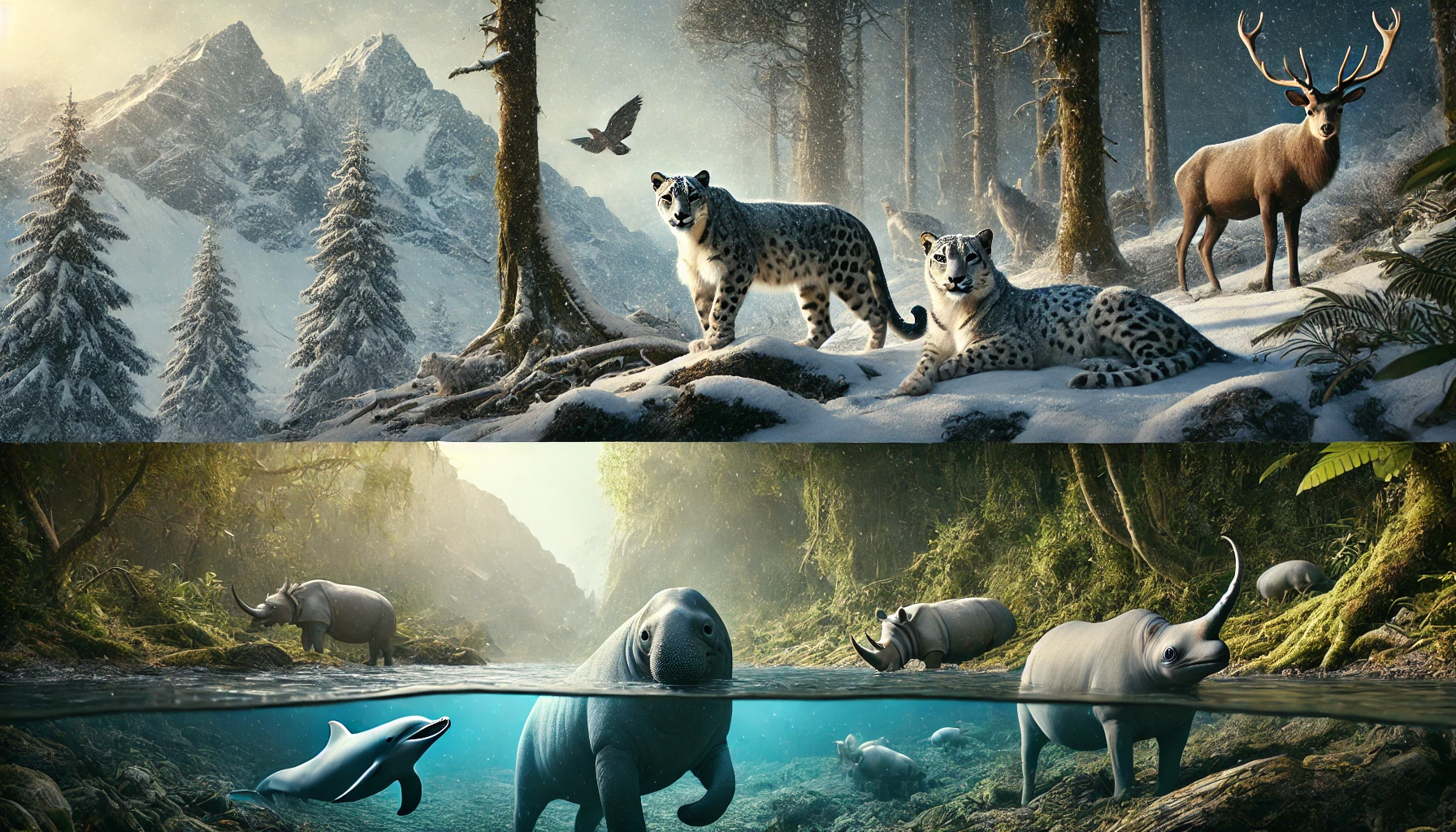In the remote corners of our planet, certain creatures thrive in obscurity, making only occasional appearances that captivate the imaginations of scientists and wildlife enthusiasts alike. These elusive and rare animals, often spotted only due to sheer luck or relentless dedication, remind us of nature’s mysteries and the importance of conservation.
The Snow Leopard: Ghost of the Mountains
High in the rugged mountains of Central Asia, the snow leopard epitomizes elusiveness. With fewer than 7,000 individuals left in the wild, these majestic felines are rarely seen by humans. Their pale, patterned fur blends perfectly with the snowy landscapes, aiding their solitary and secretive lifestyle. Conservation efforts are crucial as their populations are threatened by poaching and habitat loss. Capturing sightings of these elusive animals is a rare achievement for even the most experienced wildlife photographers.
The Javan Rhino: Last of a Kind
In the dense rainforests of Indonesia’s Ujung Kulon National Park roams one of the world’s rarest large mammals, the Javan rhino. With no more than 74 individuals existing in the wild, this species is critically endangered. The rhinos’ survival is hampered by habitat destruction and the fact that they are now confined to just one protected area, making them highly vulnerable to diseases or natural disasters. Protecting such elusive animals is a top priority for conservationists to prevent their extinction.
The Vaquita: Vanishing Marine Beauty
The vaquita is the world’s rarest marine mammal, found only in the northern part of the Gulf of California. With an estimated population of fewer than ten individuals, vaquitas may soon become a tale of extinction unless urgent action is taken. These small porpoises often fall victim to bycatch in illegal gillnet fishing. Efforts to protect these elusive animals are critical to their survival.
The Importance of Conservation
These examples highlight the urgent need for continued conservation efforts. Protecting the habitats of these elusive and rare animals and enforcing anti-poaching laws are vital steps in ensuring that future generations may also have a chance to witness these creatures in the wild.
Conclusion
The plight of the world’s most elusive and rare animals is a poignant reminder of our impact on the planet. By supporting conservation initiatives and promoting sustainable practices, we can help secure a future for these remarkable species that have adapted to some of the Earth’s most challenging environments.

